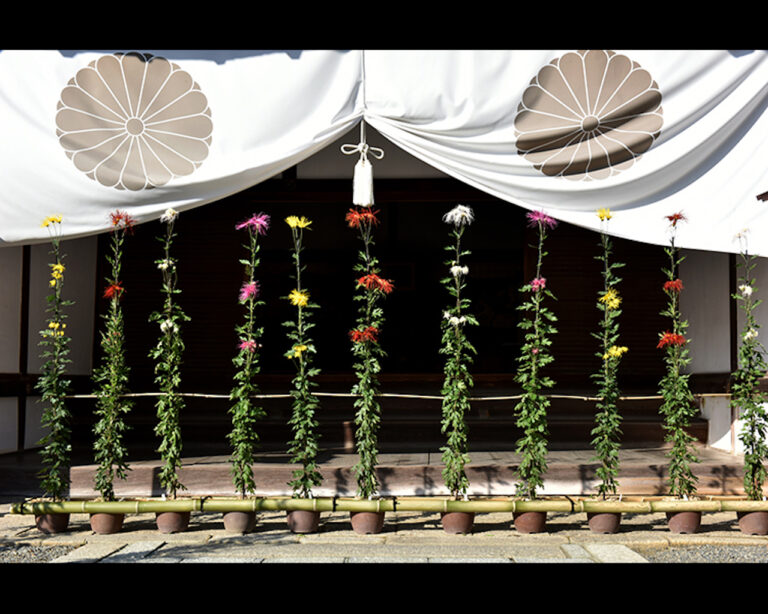
Botanical pattern -Chrysanthemum-
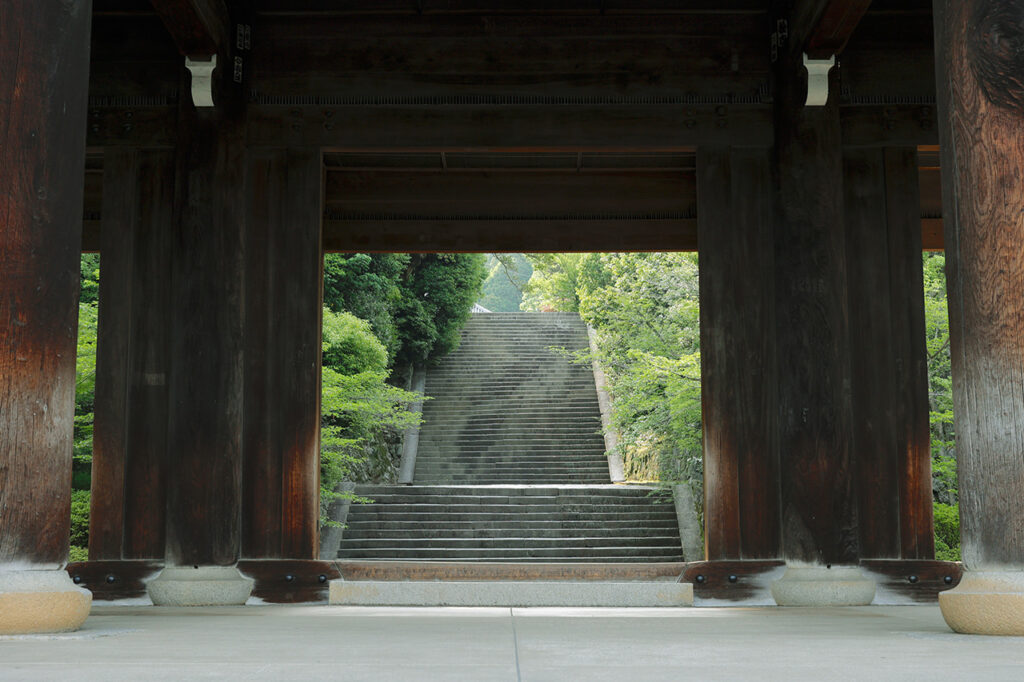

Everyone can be saved equally by simply chanting "Namu Amidabutsu" (Amitabha) with all one's heart. Honen Shonin, the founder of the Jodo sect of Buddhism, lived in Chion-in, the sacred place of Nembutsu, where he spent his life. Walking through the grounds of the temple, whose territory was expanded by Tokugawa Ieyasu, one can always hear the sound of Buddhist chanting from somewhere.
The morning service, called Chencho (Buddhist service), is open to neighbors and visitors alike, and from June to August the gates open at 5:00 a.m., the Buddhist service is held at 5:30 a.m., and the Dharma talk at 6:00 p.m. If you cannot catch the first train, including the Gyoten lecture in July, you may choose to stay overnight at the Shukubo Wajyun Kaikan. For those who cannot make it on time for the first train, including the Gyoten lecture in July, there is an option to stay at the Shukubo Wajyunkaikan.
The Mikado, a national treasure, enshrines the image (=wooden statue) of Honen Shonin. The building we see today was built by Iemitsu, the third Tokugawa Shogun.
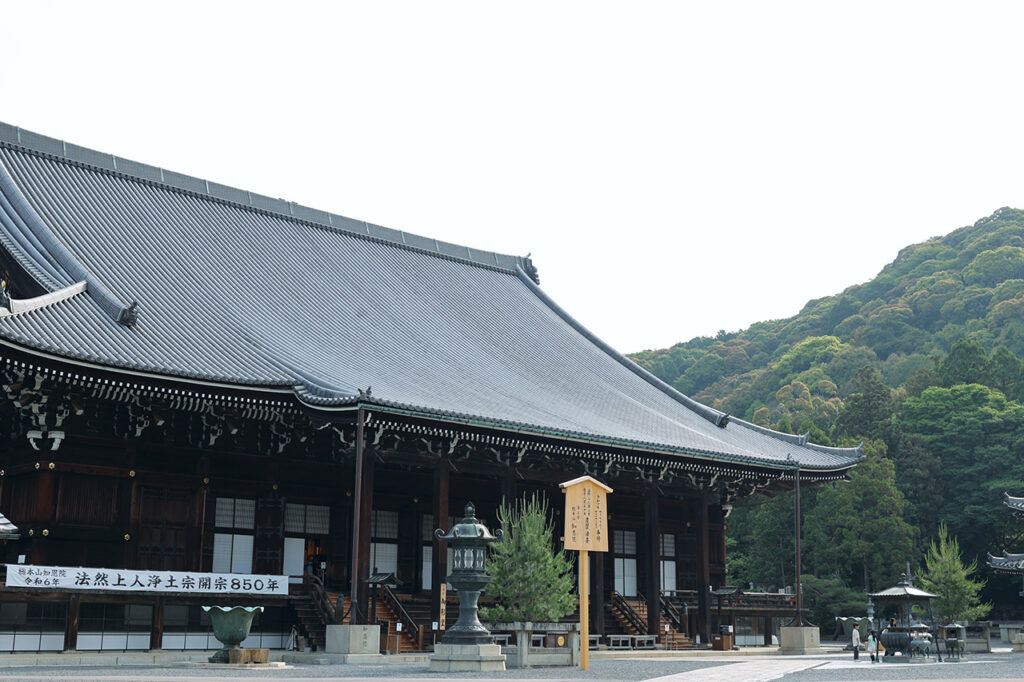

Under the eaves at the upper right side of the front, there is a "forgotten umbrella," one of the Seven Wonders of Chion-in, so keep your eyes peeled for it.
The main statue of the seated Amida Nyorai, which stands 2.7 meters tall, is enshrined in the Amida Hall. The face faces the east, and people worship in the direction of the west, which leads to the Paradise of the West. A solemn Buddhist wedding ceremony can be held here.
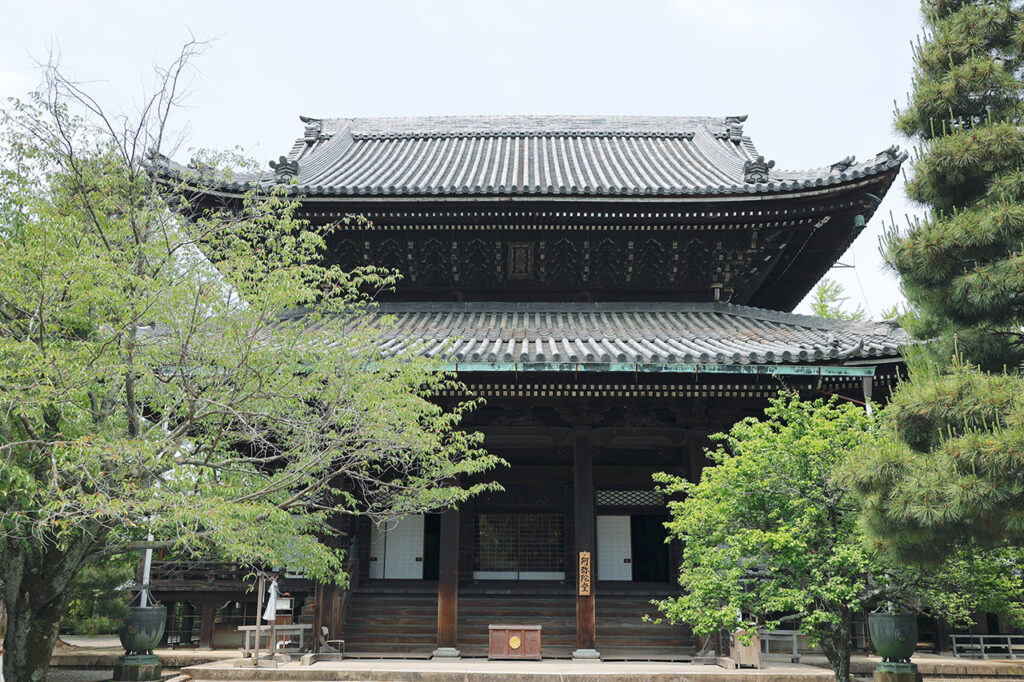

Gobyo and Seishi-do are located further up the stone steps than Mikage-do and Amida-do.
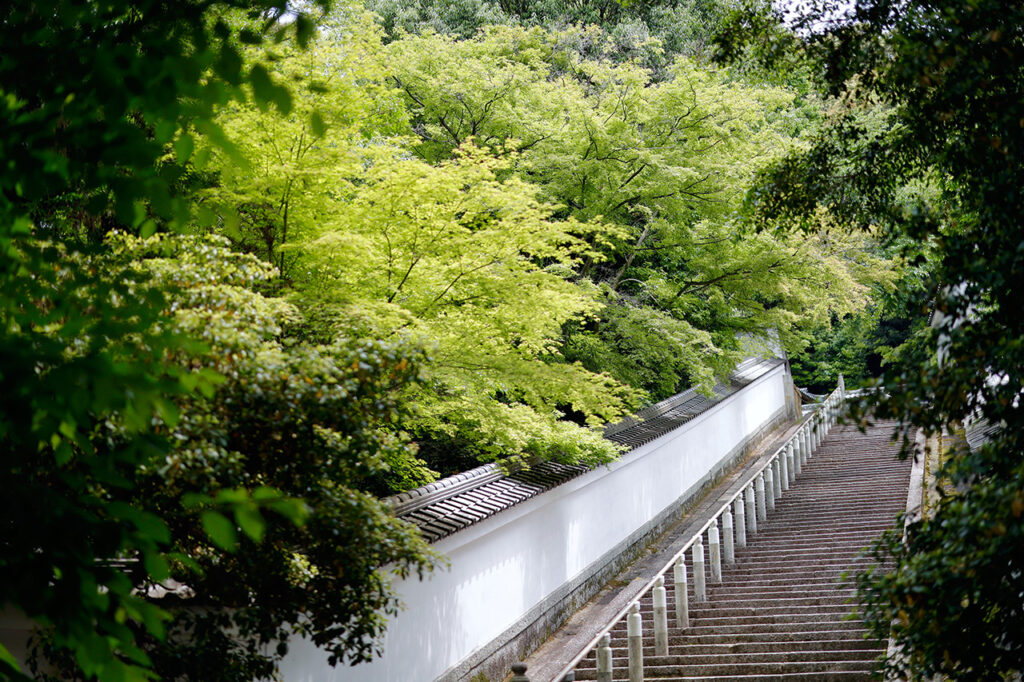

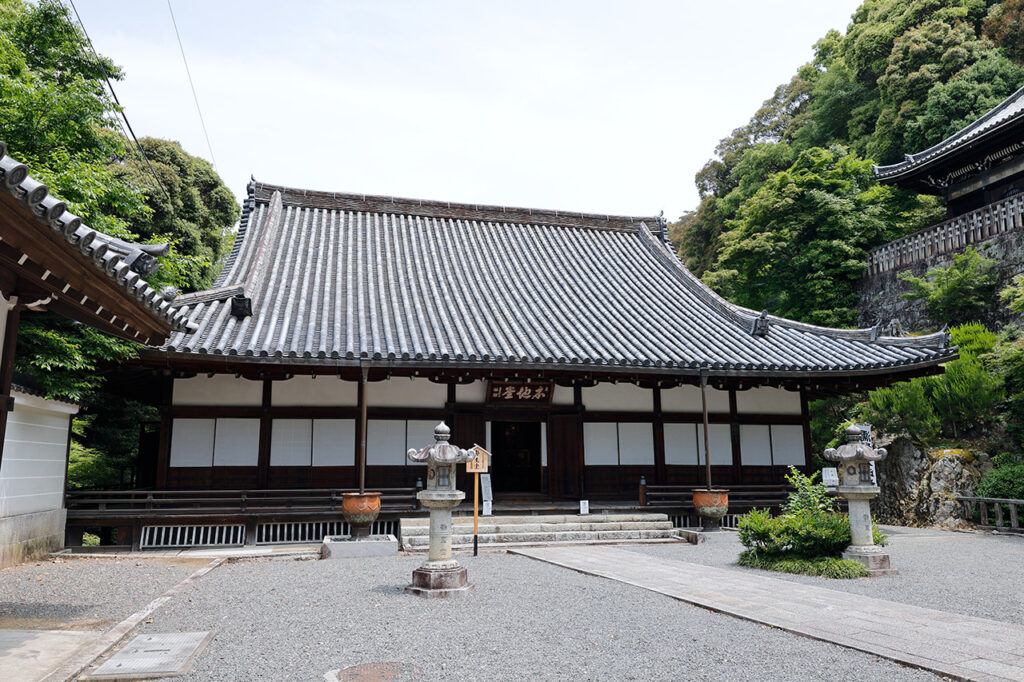

In the hall of worship in front of the mausoleum where Honen Shonin's ashes are enshrined, wooden fish are placed and visitors are free to chant sutras.
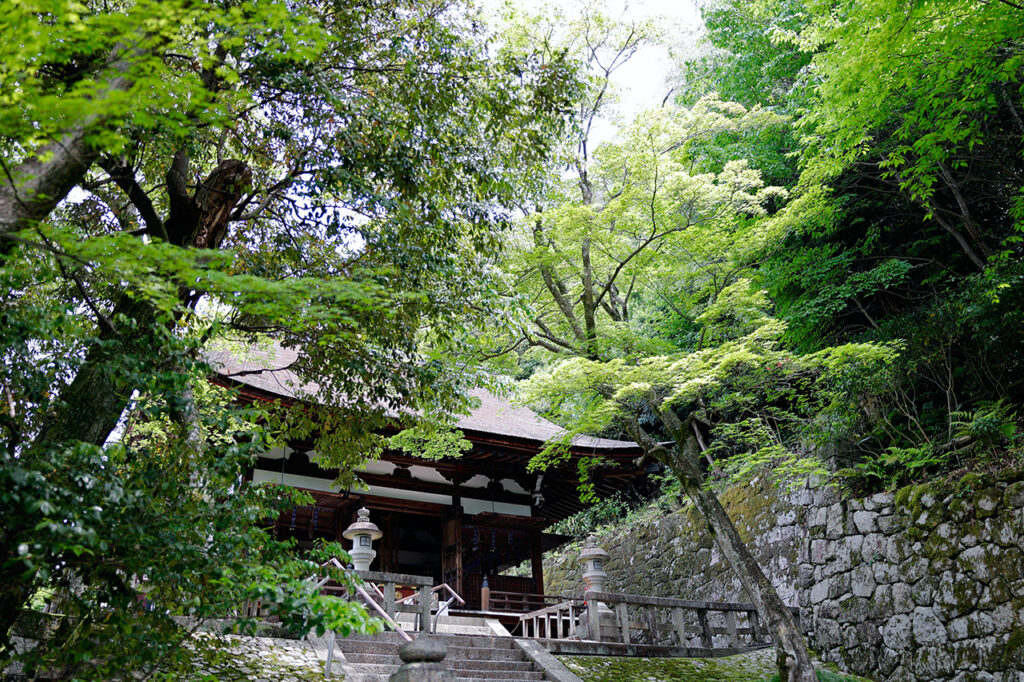

In the hall behind the Seishi Hall, visitors can experience sutra copying while overlooking the view of Kyoto.
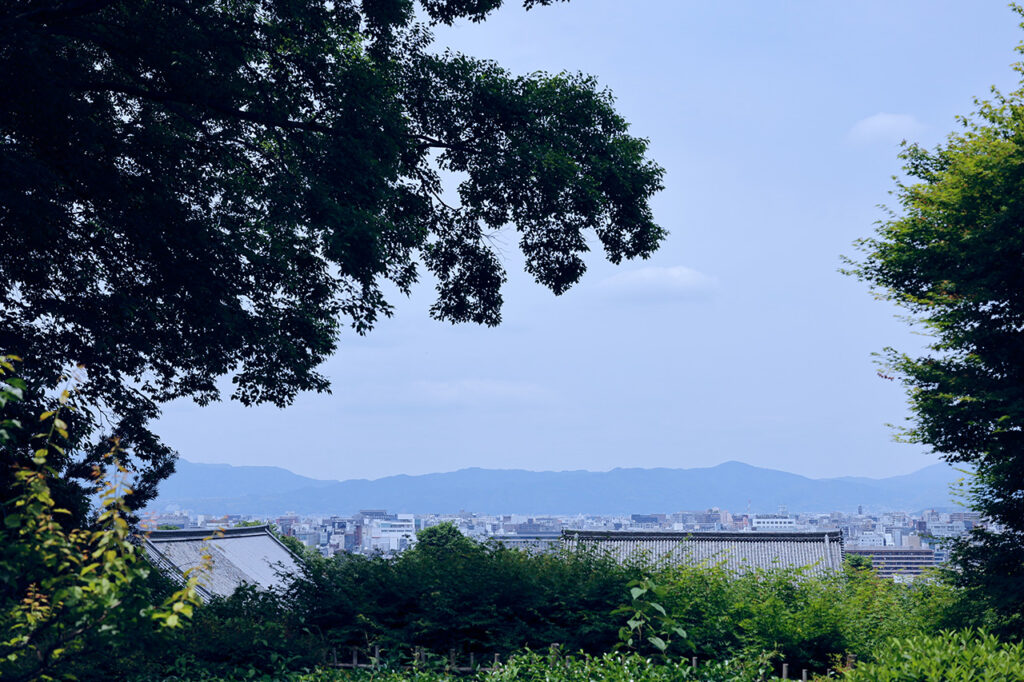

This pond garden is said to have been created by the monk Gyokuchu, who was related to Kobori Enshu. Walking around the small and large hojo, visitors can enjoy the harmony of Higashiyama and plants.
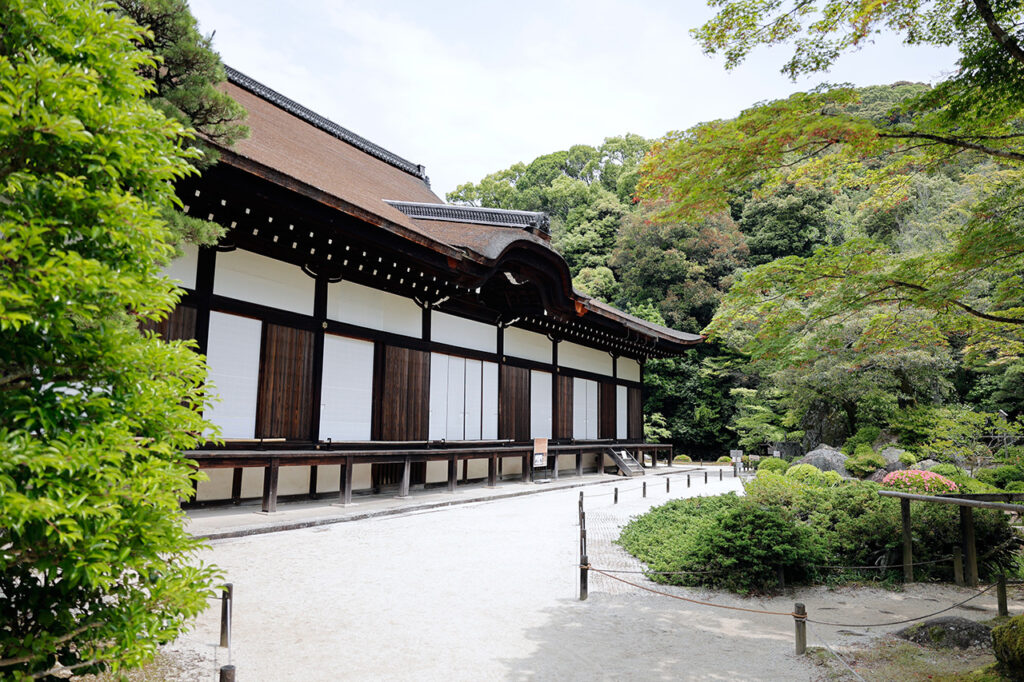

The Garden of Twenty-five Bodhisattvas, located at the far end of the garden, is planted with raigo-yun, and Amida Nyorai and Twenty-five Bodhisattvas are represented by stones.
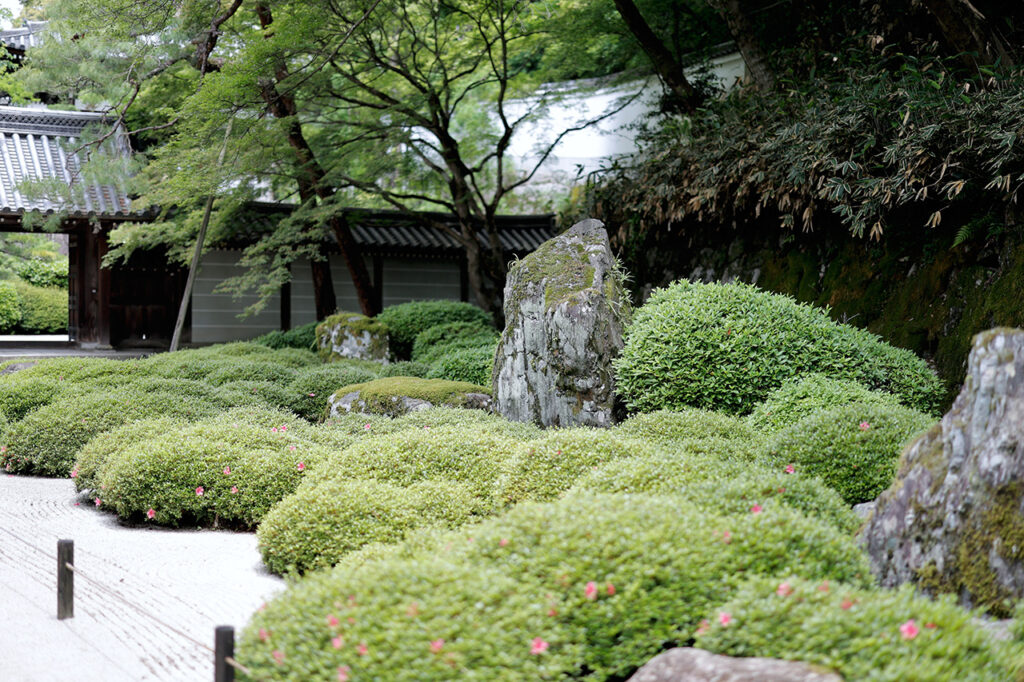

The temple is 24 meters high and 50 meters wide! After passing through the Sanmon Gate, the symbol of Chion-in, which has been used as a location for movies such as "The Last Samurai" and "Maiko is Lady," you will see a path called Otokozaka, which is a slope for worshippers.


It can also be climbed from the gently sloping women's hill on the side.
The Gyoten Lectures, which began in 1967, are a summer tradition where visitors can listen to a variety of lecturers in the Mikado Hall.
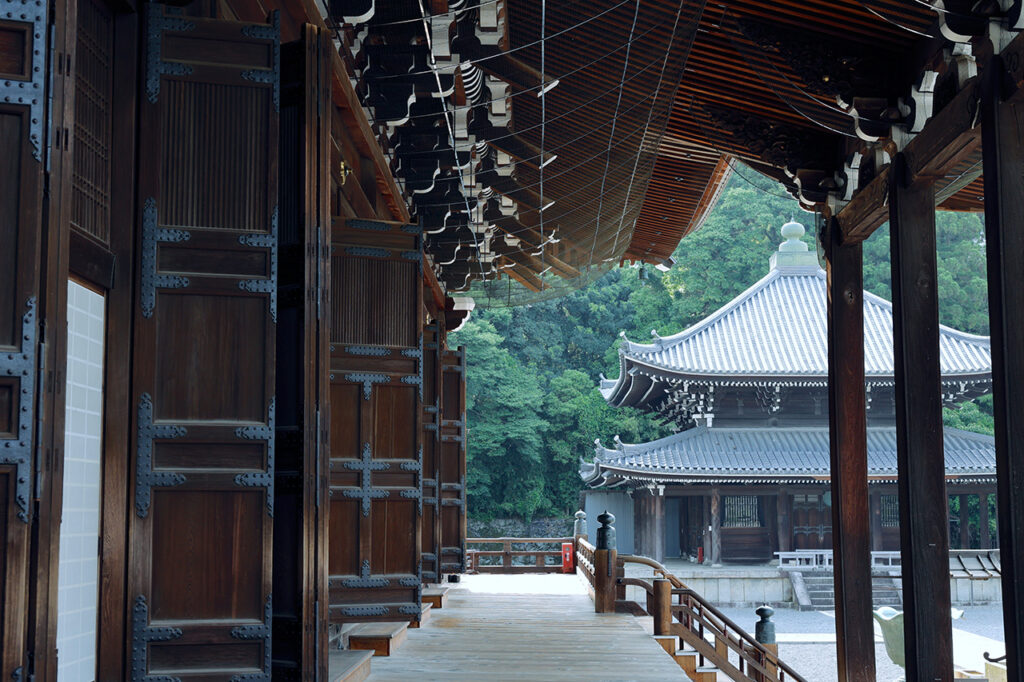

This year's event will be held July 21-23, 6:00 a.m.-7:00 a.m. Visitors may observe from the 5:10 a.m. memorial service. After the lecture and meditation, sweet potato porridge will be served.
Over 600 interviews per year! An order site carefully selected by the editors who knows Kyoto and Shiga.
nowOfficial LINE friend registration500 yen OFF coupon is being issued!
Distributed every Friday morning at 8:00 am! From new restaurant information to event information that we want to share with you, We deliver articles about Kyoto that are useful to know. About 20,000 people have registered.Click here to add a friend!
 News
News Feature article
Feature article Featured event
Featured event